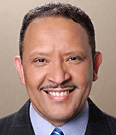 As we observe the 40th anniversary of the State of Black America®, the similarities in the nation in 2016 and that which then-National Urban League Executive Director Vernon Jordan documented in 1976 are disheartening. Our nation was struggling to overcome the worst economic downturn since the Great Depression. Pressure was building to slash social services for the poor, who were demonized and characterized as “chislers.” Communities were rocked by hostility and violence triggered by legal challenges to the social status quo.
As we observe the 40th anniversary of the State of Black America®, the similarities in the nation in 2016 and that which then-National Urban League Executive Director Vernon Jordan documented in 1976 are disheartening. Our nation was struggling to overcome the worst economic downturn since the Great Depression. Pressure was building to slash social services for the poor, who were demonized and characterized as “chislers.” Communities were rocked by hostility and violence triggered by legal challenges to the social status quo.
As with every economic downturn, communities of color bore the brunt of the decline. Black Americans remained nearly twice as likely as whites to be unemployed. Since 1976, the Black unemployment rate has consistently remained about twice that of the white rate across time, regardless of educational attainment. The household income gap remains at about 60 cents for every dollar. Black Americans are only slightly less likely today to live in poverty than they were in 1976.
On the criminal justice front, Jordan noted that Blacks were underrepresented in law enforcement in 1976. “The City of Chicago is an example: with a population that is 32.7 percent black, it has a police force that is only 16 percent black.” Today, in hundreds of police departments across the nation, the percentage of whites on the force is more than 30 percentage points higher than in the communities they serve.
“The urgency of the problems that grip the American people allow no time for delay or for half-way measures,” Jordan observed.
There have been times when Americans have met our shared challenges – as well as those of the international community – with full-measured urgency. When Europe found itself in physical and economic ruin after World War II, the United States invested $13 billion (or what would be approximately $130 billion today) to help rebuild Western European economies through the European Recovery Program, more commonly known as the Marshall Plan. The Marshall Plan ushered a dramatic increase in economic growth in European history.
Though the plan officially ended in 1953, the unprecedented economic growth it sparked continued over two decades.
Former National Urban League President John Jacob introduced the concept of an urban Marshall Plan for America in the 15th State of Black America® in 1990. At the time, he said the nation should commit itself to completing “our unfinished revolution for democracy and human rights.”
Dear Mr./Madame President, that revolution remains unfinished.
Since 2006, the United States has spent nearly $50 billion rebuilding Afghanistan through the Afghanistan Infrastructure Rehabilitation Program. The Troubled Asset Relief Program (TARP), signed into law by President George W. Bush in 2008, infused the nation’s faltering financial institutions with investments of more than $400 billion. Whether we call it “recovery,” “rehabilitation” or “relief,” it is time for America to demonstrate that very same commitment to our own struggling urban families and communities. The necessity is as powerful and compelling as it was for Europe, Afghanistan or Wall Street.
That is why, with this milestone 40th Anniversary State of Black America®, the National Urban League proposes a sweeping and decisive solution to the nation’s persistent social and economic disparities. We call it the Main Street Marshall Plan: Moving from Poverty to Prosperity.
This bold and strategic investment in America’s urban communities requires a multi-annual and multi-pronged commitment of $1 trillion over the next 5 years that would course correct our main streets. Our nation needs investments in:
- Universal early childhood education
- A federal living wage of $15 per hour, indexed to inflation
- A plan to fund comprehensive urban infrastructure
- A new Main Street small- and micro-business financing plan focusing on minority-and-women-owned businesses
- Expansion of summer youth employment programs
- Expanded homeownership strategies
- Expansion of the Earned Income Tax Credit (EITC)
- Targeted re-entry workforce training programs administered through community-based organizations
- Doubling the Pell Grant program to make college more affordable
- Expansion of financial literacy and homebuyer education and counseling
- Expansion of the low-income housing voucher “Section 8” program
- Establishment of Green Empowerment Zones in neighborhoods with high unemployment
- Affordable high-speed broadband and technology for all
- Increased federal funding to local school districts to help eliminate resource equity gaps
As America’s urban communities continue to struggle in the slow rebound from the Great Recession, we can expedite the recovery by taking a lesson from the pages of our history books and similarly focusing our efforts with great vision and purpose-filled ambition. Our economy and infrastructure have been shattered, not by bombs and tanks, but by malfeasance and indifference.
Under President Obama, the nation has made great strides in stabilizing the economy. In eight years, America has gone from losing hundreds of thousands of jobs per month to 73 consecutive months of job growth. During President Obama’s term, the private sector has added 14.4 million new jobs, and the Economic Recovery and Reinvestment Act is widely credited with protecting the nation from a second Great Depression.
However, much more remains to be done. The benefits of the recovery have not reached the Main Streets of our most troubled communities. We cannot continue to rely on policies that have proven ineffective in communities with high unemployment and low income. You see, we are not asking for a new deal; we are demanding a better deal. As a nation, we must focus our resources and efforts on the neighborhoods where they are most needed.
Vernon Jordan realized in 1976 that it was incumbent upon the National Urban League to confront the problems that Washington refused to acknowledge. Forty years later, we continue on that path to progress – with a clear purpose and an even clearer plan.
Marc H. Morial
President & CEO,
National Urban League


 Equality Index
Equality Index  Senate Report
Senate Report  2020 SOBA Essays
2020 SOBA Essays  2019 Report
2019 Report 